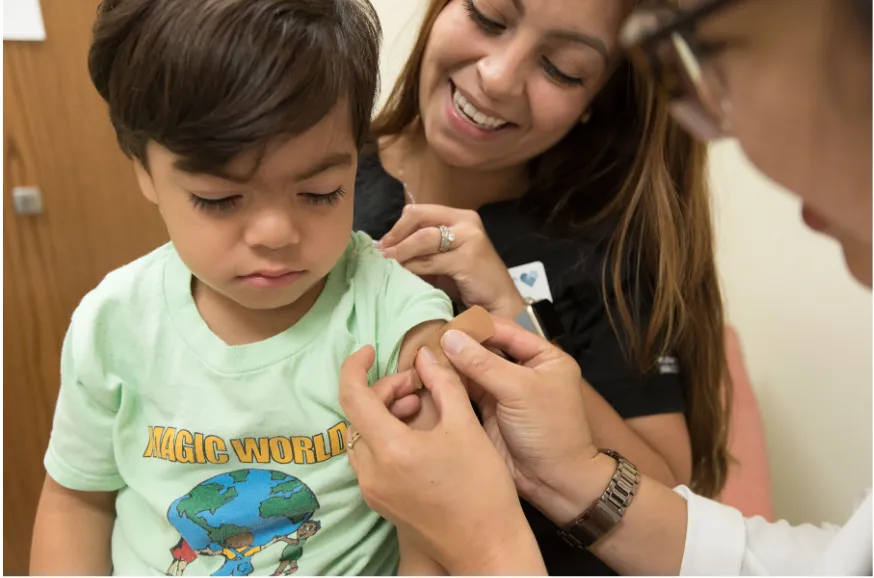Pregnancy-Related Deaths in the US Are a Health Crisis and a Moral Issue
April 16, 2025

Pregnancy is supposed to be a time of hopeful expectancy coupled with careful health monitoring. It is not supposed to be a dangerous and even fatal undertaking. In most developed countries pregnant* people survive the experience at very high rates. In 2023 in the United States, however, 18.6 pregnant people per 100,000 live births died, a total of 669 women. That is the highest rate of pregnancy-related mortality of any developed country in the world.
What is even worse than that grim statistic is the severe racial disparity attendant to the US pregnancy-related death rate. The rate for White people was 14.5 per 100,000 live births in 2023, the last year for which we have accurate data. The rate for Black people was 50.3. Sit with that for a moment. The pregnancy-related death rate for Black people was more than three times the rate for White people.
These data make clear that pregnancy-related death in the US is both a health crisis and a moral issue. The overall maternal mortality rate dropped in 2023 compared to earlier years, but if you look at this figure from a February 2025 CDC report you see that it did not decrease for Black people.
*Terminology is complex on this issue. Most scientific, governmental, and media reports use the term “maternal mortality” and refer only to women when discussing pregnancy. We will try to use the terms “pregnancy-related mortality” and “pregnant people” whenever possible to recognize that trans people can also be pregnant and apologize for slip-ups caused by what is more common in scientific discourse and media reports.
Challenges to Reducing Pregnancy-Related Death Disparities
Clearly, we need to bring these rates down, especially for the group most affected. But the current political climate is not encouraging. Federal officials are busy scrubbing all mention of disparities and inequalities from its documents and websites. Last month, a federal dataset called the Pregnancy Risk Assessment Monitoring System (PRAMS) was suddenly shut down. This dataset contains information on infant and pregnancy health that goes beyond what can be found on birth certificates and is seen by experts as important in understanding mortality trends.
There are many things that we ought to be doing to stem pregnancy-related mortality in the US and we seemed to be off to a promising start during the Biden administration according to the American Medical Association (AMA). Last year, the AMA president, Jesse M. Ehrenfeld, praised the administration for recognizing that “the maternal health crisis is at the intersection of multiple complex issues, including health equity, adequate access to health care, socioeconomic factors and more, making the maternal health crisis an issue that will require large systemic changes to successfully address.”
The AMA recommended seven steps the government should take to address the pregnancy-related mortality crisis:
- Implementation of a program called “Core Alliance for Innovation on Maternal Health” that includes patient-safety bundles and checklists
- Expanding evidence-based programs to treat substance use disorder during pregnancy and postpartum
- Addressing social determinants of health
- Promoting telehealth and home monitoring programs during pregnancy and postpartum
- Ensuring the acquisition of high-quality data
- Addressing physician workforce needs in pregnancy care
- Use of new payment models to prevent pregnancy-related deaths
Many of these steps would help to address the more than three-fold disparity in death rates between Black and white women. We really do not fully understand exactly why this disparity exists, although of course it seems obvious that overall inequalities in healthcare availability and socioeconomic support are major factors. Complications from pregnancy like preeclampsia and eclampsia and cardiovascular conditions like thromboembolism, hemorrhage, and cardiomyopathy are the most common causes of pregnancy-related death for Black women, while mental health conditions like depression and substance use disorder are the most common causes of pregnancy-related mortality overall.
Another step that could reduce pregnancy deaths is expansion of domestic violence firearm legislation. Violence, including homicides and suicides, are a major cause of pregnancy-related death and pregnant people are more at risk of suffering a violent death than non-pregnant people. Research suggests that laws requiring domestic violence perpetrators to relinquish their guns can reduce the rate of homicides of pregnant people and a recent study showed that domestic violence firearm laws reduced that risk by 17 to 32 percent. However, the current climate does not seem ripe for expansion of life-saving gun control legislation.
Another way to reduce pregnancy-related deaths is to prevent unwanted pregnancies in the first place. The Affordable Care Act (ACA) eliminated co-pays for contraceptives and this is associated with both increased use of contraceptives and decreased rates of unintended pregnancies and abortions. The ACA contraceptive rule has been challenged in court many times and there is fear that future challenges may prevail. Hopefully, legislators will recognize the value of this provision.
Will a New Federal Maternal Care Model Survive Medicaid Cuts?
On January 6 the US Centers for Medicare and Medicaid Services (CMS) announced it had named 14 states plus the District of Columbia to participate in its new Transforming Maternal Health Model. This model is a 10-year project aimed at helping mothers and children enrolled in Medicaid successfully navigate pregnancy and the postpartum period. The model provides support including new payment models for maternity care services, access to midwives and doulas, and help for hospitals to improve the care they provide during pregnancy and the postpartum period. We hope this welcome and ambitious project survives current threats to cut Medicaid.
The government can remove words like “women” and “disparity” from its websites and terminate federal research grants that investigate the causes of and solutions for health disparities. Data collection systems like PRAMS can be terminated. It can try to block domestic violence firearm laws, reverse the ACA contraceptive rule, and cut back on projects like the Transforming Maternal Health Model. The result of this will be more unwanted pregnancies, less scientific understanding of pregnancy-related mortality, and more deaths of pregnant people, especially Black people. Scientists, advocates, public health experts, and healthcare professionals need to mount a serious campaign to maintain the momentum started during the Biden administration to reduce pregnancy-related death and do all that is possible to see the rates of maternal mortality among Black people start to decline. The current situation is a health and moral crisis that is a stain on the US in the world’s eyes.
Related Posts

How to Improve the Public's Health
Posted in Public health
What will it take to focus in on the things that really move the needle in public health?

Cleaning Up the Air We Breathe Has Been a Successful Undertaking: We Must Not Gut the EPA
Posted in Environmental Health
There is talk in Washington about gutting the EPA. Here's why that's a bad idea.

We Should Celebrate the Advances Vaccine Research Is Making: But Many Aren't
Posted in Health Communication
There are so many reasons to celebrate vaccines lately. So why are so many not partaking?